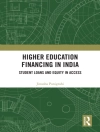Technology for modifying the genotypes and phenotypes of insects and other arthropods has steadily progressed with the development of more precise and powerful methods, most prominently transgenic modification. For many insect pests, there is now almost unlimited ability to modify phenotypes to benefit human health and agriculture. Precise DNA modifications and gene drive have the power to make wild-type populations less harmful in ways that could never have been performed with previous transgenic approaches. This transition from primarily laboratory science to greater application for field use has also necessitated greater development of modeling, ethical considerations and regulatory oversight. The 2nd Edition of Transgenic Insects contains chapters contributed by experts in the field that cover technologies and applications that are now possible. This edition includes increased attention to associated challenges of risk assessment, regulation, and public engagement. Featuring:
Up-to-date analysis of molecular techniques, such as gene editing.
Consideration of public attitudes and regulatory aspects associated with transgenic insects.
Many examples of the wide range of applications of transgenic insects.
This book will be very valuable to students and researchers in entomology, molecular biology, genetics, public health and agriculture, and will also appeal to practitioners who are implementing the technology, and to regulators, stakeholders and ethicists.
İçerik tablosu
Transposon-Based Technologies for Germline Transformation of Insects Inducible / Repressible Systems for Transgene Expression Sex, Tissue and Stage-specific Transgene Expression Docking Systems for Site-Directed Transgene Integration CRISPR Knock-in transformation Receptor-Mediated Ovary Transduction of Cargo (Re MOT Control) Site-directed DNA Sequence Modification Using CRISPR/Cas9 Molecular Biology of Gene Drive Systems Drosophila as a model to evaluate gene drive systems Germline transformation of ticks Tsetse Paratransgenesis: a Novel Strategy for Reducing the Spread of African Trypanosomiasis Paratransgenesis of Glassy Winged Sharpshooter Paratransgenic Control of Chagas Disease
Asaia Paratransgenesis of Mosquitoes Paratransgenesis in Mosquitoes and Other Insects: Microbial Ecology and Bacterial Genetic Considerations RNA interference
Wolbachia transformation Honeybee transgenesis Sex Ratio Manipulation Using Gene Drive for Mosquito Population Control Population Alteration Using Gene Drive for Reduction of Malaria Transmission Understanding Development Using
Tribolium Silkworm Transgenesis and Applications Tephritid Fruit Fly Transgenesis and Applications Antiviral Effectors for Mosquito Transgenesis Conditional Dominant Lethals for population control RIDL Transgenic Approaches for Sterile Insect Control of Dipteran Livestock Pests and Lepidopteran Crop Pests Acceptability of New Insect Vector Control Technologies Regulation of Transgenic Insects Economics of Transgenic Insects for Field Release The Cartagena Protocol Risk Analysis of Transgenic Insects RIDL: Release of Insects Carrying a Dominant Lethal Modeling threshold-dependent gene drives Modeling self-limiting gene drives (killer-rescue, daisy chain)
Yazar hakkında
Max has a Ph D in molecular cell biology with an emphasis on the regulation of gene expression from Baylor College of Medicine in Houston, Texas. He has developed techniques for insect transgenesis, engineered male-only strains of agricultural pests such as the New World screwworm and spotted wing Drosophila, led the assembly and analysis of genomes from several species including screwworm, participated in the application for field testing of a transgenic male-only screwworm strain and developed self-limiting gene drive technologies that are applicable to a broad range of insect pests. Max has worked at the University of North Carolina at Chapel Hill, the Institute of Biotechnology and Molecular Biology in Heraklion, Crete, Greece, Emory University and was a lecturer in genetics for 16 years at Massey University in New Zealand. He is currently a Professor in the Entomology and Plant Pathology Department at North Carolina State University. He has contributed reviews, book chapters, a patent and peer reviewed publications.












